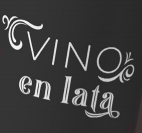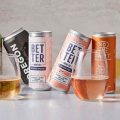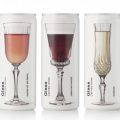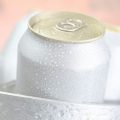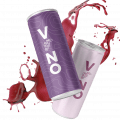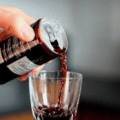Young people also drink canned wine
We would never have imagined that wine could be drunk in a can and perhaps we wouldn’t want it either; but the younger ones… it seems that it is.
“The consumer of this type of product is very present in the dynamics of young people. Because they are easy to drink, easy to cool and easy to carry. And they are also sustainable, something that this target audience, younger, gives much importance”, explains Ignacio Pasman, marketing leader of Bodegas López de Argentina.
Knowing the sustainable and preservation qualities of canned containers that we always mention, there is not much difference in the quality of the wine that is bottled and that which is bottled. Even so, according to the Argentine magazine Vinetur, “before developing a new wine in a can, it is necessary for the wineries to carry out a rigorous analysis of the physical-chemical properties of the liquid and its interaction with the container”.
Ball Corporation, a leader in packaging and expertise in the packaging of quality wine, works in conjunction with bottling companies to ensure that all tests are performed to detect the perfect preservation of the wine property, according to the media.
“It is advisable that the product is drunk within the year because the aluminum has a completely harmless varnish inside (as in any can of soda or beer) and the supplier of the cans guarantees that varnish for a year”, said Juan Pablo Díaz, winemaker of Bodegas López and adds to this specialized magazine: “They are fresh products designed to be drunk within the year, which does not mean that if more time passes something can happen to the product. Although the wine may lose quality characteristics because they are products that we have elaborated to be consumed within the year”.
In Argentina, the commercialization of sweet wines in cans began, but now all of them, rosés, whites and reds, also come in that presentation.
In the case of the Argentine winery, Santa Julia, they had a previous successful experience in the North American market with three brands: Santa Julia Organic Malbec Rosé, certified organic; Tintillo, a blend of Malbec and Bonarda made through carbonic maceration, recommended to drink cold. “They are all young wines to drink refreshed, so the can is ideal for that,” said Nancy Johnson, brand ambassador for Bodega Santa Julia.
Bodegas Bianchi, for its part, was also clear that the target audience for one of its canned wines was aimed especially at the youngest. “Young people are looking for lighter wines, with less alcohol. That’s why New Age, Bianchi’s iconic brand, with As Vinetur points out, wine in a can has many advantages, one of them being that the size allows it to be individual. Not only this, it is ideal to be consumed in places where it was not usual until now: swimming pools, concerts, beaches, etc. According to a study conducted by Nielsen in 2019, said the Spanish newspaper La Vanguardia, the growth of canned wine “already represents a business of 45 million dollars in the United States and an increase in production of 59.5% in one year. It still represents a small portion of the market (0.2% of total sales), but it is by far the highest percentage of growth ever recorded among all alternative packaging to glass”.
For Paula Sidore, founder of Weinstory and ProWein trend expert, “Cans represent the here and now of a hassle-free lifestyle. No extra equipment is required because they’re a one-size-fits-all, ready-to-serve container. And in the age of Instagram, cans are also eye-catching.” “The image of cans will improve when winemakers start taking seriously the packaging and wines that best suit their conditions. The industry has been through this before with screw caps.
There are the screwcap lovers, the screwcap haters and a lot of winemakers in between who use screwcaps if they fit the style and philosophy of their wine.
I hope we can get to that point one day with cans as well,” she said. Canned wine is not a new alternative in Spain. Already in 2008, this “experiment” had been made, says La Vanguardia.
At that time, “the Garvey Bodegas Group launched 300,000 units of quality wine in cans, aimed at young people and singles between 22 and 40 years old, to introduce them to the world of wine. To the surprise of the winery from Cádiz, the stocks were sold out earlier than expected due to the good reception”.

